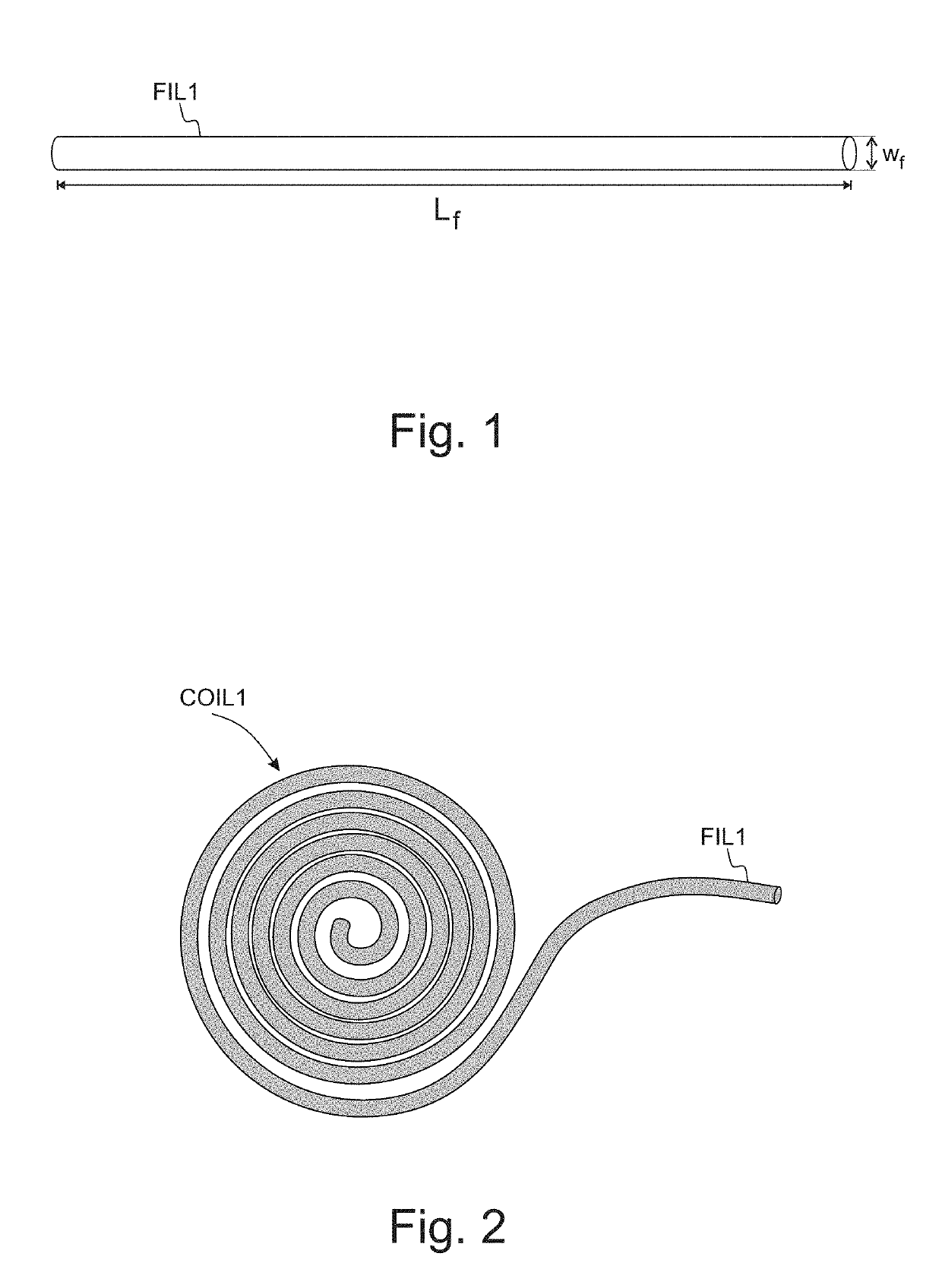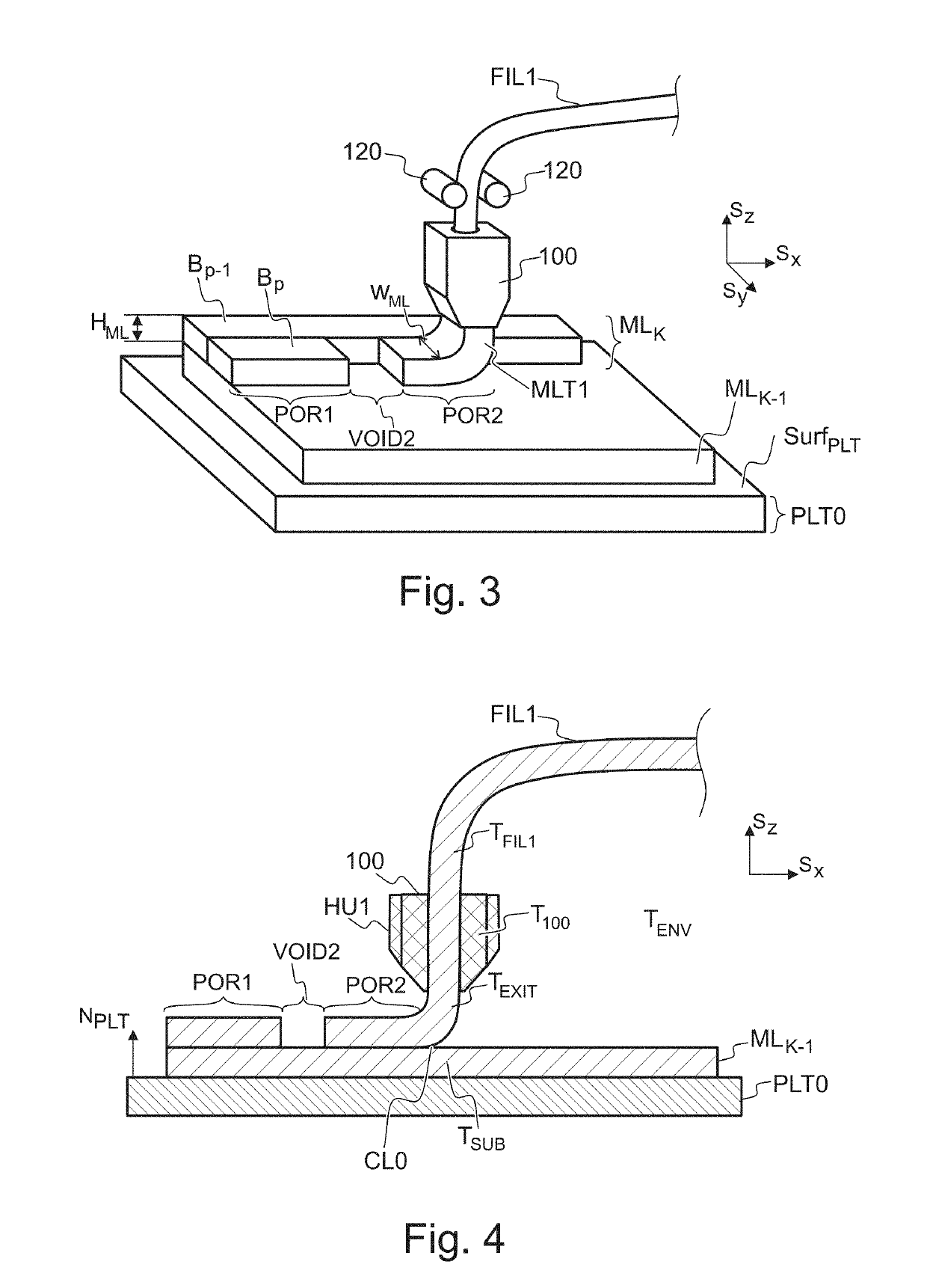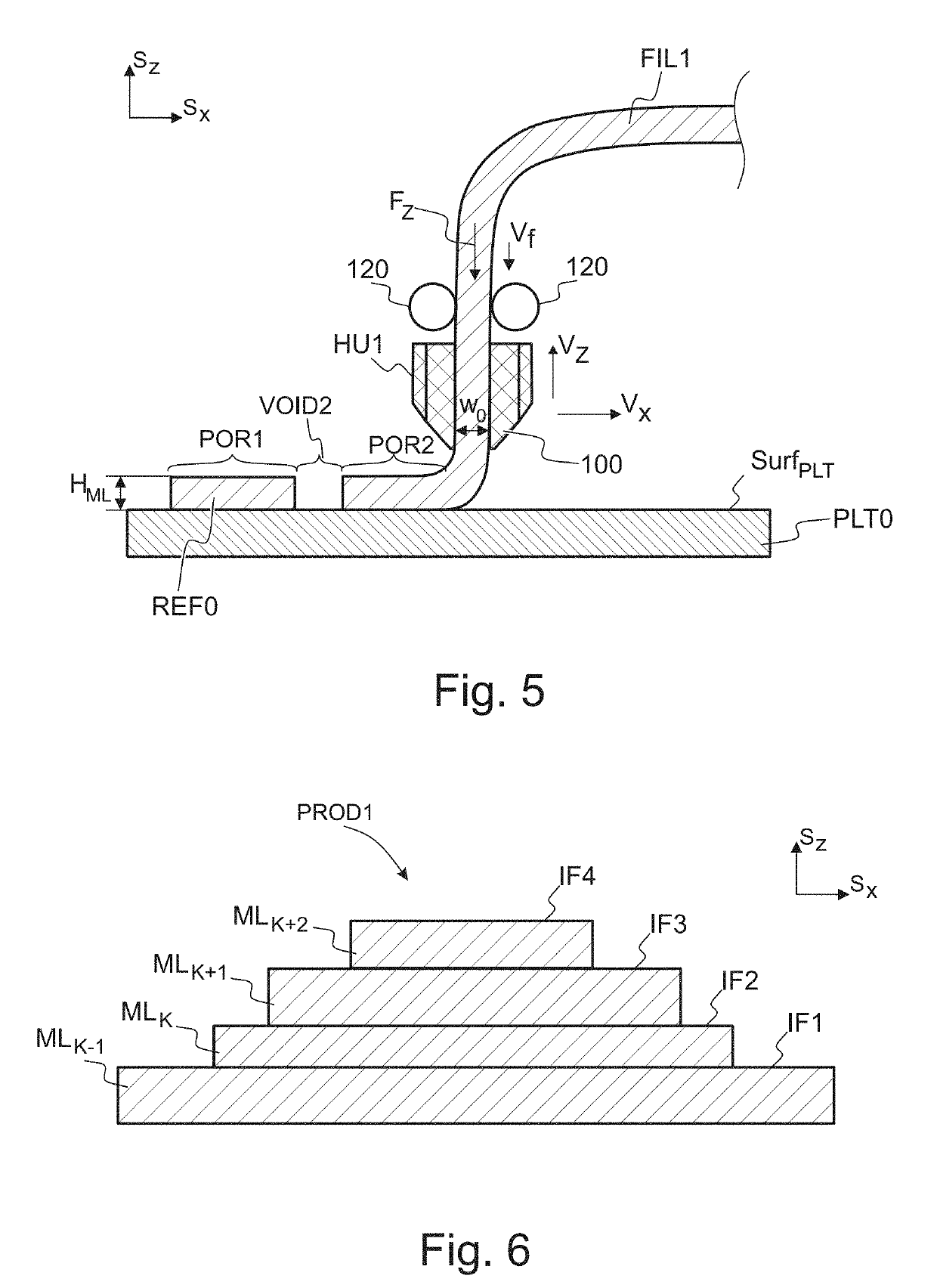Composite material for additive manufacturing of a three-dimensional composite product
a composite material and additive manufacturing technology, applied in the field of composite materials, can solve the problems of increasing the risk of feeding interruption, high cost, and high cost, and achieve the effects of reducing the shrinkage tendency of composite materials, promoting heterogeneous nucleation of semi-crystalline polymers, and high complex viscosity
- Summary
- Abstract
- Description
- Claims
- Application Information
AI Technical Summary
Benefits of technology
Problems solved by technology
Method used
Image
Examples
example 1
ve Data of the Thermomechanical Properties of the Filament Material
[0088]Table 1 below, illustrates some mechanical and physical properties of composite materials. Samples and comparative samples were tested in view of their physical, mechanical and thermal properties. Sample ‘S0’ contains virgin polypropylene and 20 wt. % of chemical pulp of wood-based cellulose fibers. Sample ‘S0’ does not contain polylactic acid. Sample ‘S1’ consists of semi-crystalline polylactic acid, and does not contain chemical pulp of wood-based cellulose fibers. Sample S2 contains semi-crystalline polylactic acid and 20 wt. % of chemical pulp of wood-based cellulose fibers. Sample ‘S2’ does not contain polypropylene. Sample ‘S3’ contains 70 wt. % semi-crystalline polylactic acid, 10 wt. % of polypropylene and 20 wt. % of chemical pulp of wood-based cellulose fibers. Sample ‘C1’ is a reference sample containing a polymer blend based on polyesters such as polylactic acid, wood fibres in the range of 10-20% a...
example 2
ve Data of the Melt Rheology of the Filament Material
[0104]Referring to FIGS. 7 and 8. The figures illustrate the shear loss modulus curve G″ and the shear storage modulus curve G′ as a function of temperature T, in composite material samples S1, S2, S3 and C1 comprising polylactic acid, the samples corresponding to those disclosed in example 1 above. The dynamic rheological properties of the composite melts were determined by means of an oscillatory rheometer with a parallel-plate geometry in test conditions as disclosed below.
[0105]Test Conditions:[0106]Measuring system: Parallel plates geometry, setup PP25-SN5319, disc diameter 25 mm, gap 0.6 mm[0107]Strain amplitude: 0.1%, in linear viscoelastic region[0108]Frequency: 1 Hz[0109]Temperature ramp: 180 to 25° C., linear rate of 5° C. / min, Continuous Ramp, 5 points per decade[0110]Test device: Anton Paar MCR 301
[0111]The test was conducted following the manufacturer's instructions and according to ISO standard 6721-10:2015, which is...
example 3
ve Data of the Heat Deflection Temperature of the Filament Material
[0121]Table 3 below provides experimental data of the effect of chemical pulp of wood-based cellulose fiber and polypropylene on heat deflection temperature of the filament comprising composite material. The heat deflection temperature was measured from composite material samples S1, S2 and S3 corresponding to those disclosed in example 1 above. The heat deflection temperatures were determined under constant flexural stress of 1.8 MPa, in accordance with method A of the standard ISO 75-2 (version 2013).
[0122]
TABLE 3Heat deflection temperatures determined of samples S1 to S3.SampleHDT (° C.)S154.0S2103.2S356.2
[0123]Based on the results of sample S1, a filament containing polylactic acid has a low heat deflection temperature of less than 60° C. Based on the results of sample S2, a filament containing polylactic acid and chemical pulp of wood-based cellulose fibers may be arranged to have a considerably higher heat defl...
PUM
| Property | Measurement | Unit |
|---|---|---|
| temperature | aaaaa | aaaaa |
| temperature | aaaaa | aaaaa |
| viscosity | aaaaa | aaaaa |
Abstract
Description
Claims
Application Information
 Login to View More
Login to View More - R&D
- Intellectual Property
- Life Sciences
- Materials
- Tech Scout
- Unparalleled Data Quality
- Higher Quality Content
- 60% Fewer Hallucinations
Browse by: Latest US Patents, China's latest patents, Technical Efficacy Thesaurus, Application Domain, Technology Topic, Popular Technical Reports.
© 2025 PatSnap. All rights reserved.Legal|Privacy policy|Modern Slavery Act Transparency Statement|Sitemap|About US| Contact US: help@patsnap.com



